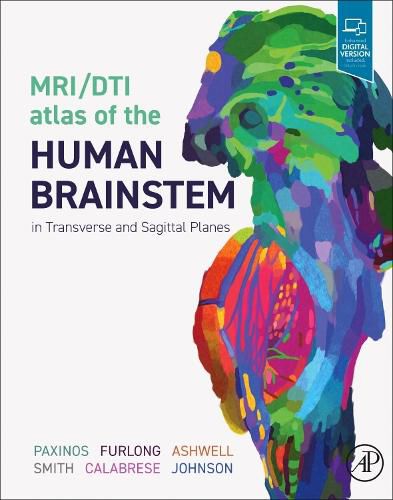Readings Newsletter
Become a Readings Member to make your shopping experience even easier.
Sign in or sign up for free!
You’re not far away from qualifying for FREE standard shipping within Australia
You’ve qualified for FREE standard shipping within Australia
The cart is loading…






Selected for Doody's Core Titles (R) 2024 in Neuroscience
MRI/DTI Atlas of the Human Brainstem in Transverse and Sagittal Planes presents a detailed view of the human brainstem in DTI/MRI. It is the first ever MRI or histological atlas to present detailed diagrams of sagittal views of the brainstem. Presenting data of unprecedented quality, images are juxtaposed with detailed diagrams in the transverse and sagittal planes. The atlas features a 50 micron resolution for the GRE and 200 microns for the FAC and DWI, 8000 times higher than that seen in a clinical MRI and 1000 times higher than that seen in a clinical DTI scan, all based on one brain.
This atlas is important for neuroscientists, neurosurgeons, pathologists, anatomists, neurophysiologists, radiologists, radiotherapists (e.g., for cyberknife guidance), and graduate students in neuroscience.
$9.00 standard shipping within Australia
FREE standard shipping within Australia for orders over $100.00
Express & International shipping calculated at checkout
Selected for Doody's Core Titles (R) 2024 in Neuroscience
MRI/DTI Atlas of the Human Brainstem in Transverse and Sagittal Planes presents a detailed view of the human brainstem in DTI/MRI. It is the first ever MRI or histological atlas to present detailed diagrams of sagittal views of the brainstem. Presenting data of unprecedented quality, images are juxtaposed with detailed diagrams in the transverse and sagittal planes. The atlas features a 50 micron resolution for the GRE and 200 microns for the FAC and DWI, 8000 times higher than that seen in a clinical MRI and 1000 times higher than that seen in a clinical DTI scan, all based on one brain.
This atlas is important for neuroscientists, neurosurgeons, pathologists, anatomists, neurophysiologists, radiologists, radiotherapists (e.g., for cyberknife guidance), and graduate students in neuroscience.